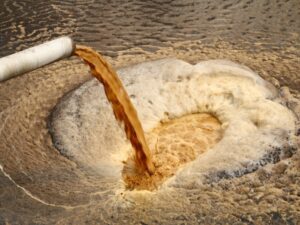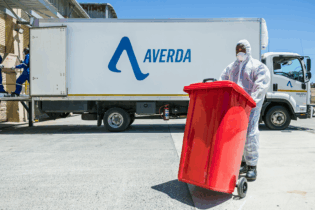Poor sanitation (open defecation, leaking pipes, overloaded wastewater treatment works) reduces the value of water. Faecal contamination from sanitation systems pollutes water resources. What is the link between sanitation, water and disease?
The interactions between sanitation systems and water resources are complex, with contamination expected to increase with the onset of climate change and increased frequency of heavy rainfall events that can mobilise bacteria and viruses. Sanitation should not compete with water for investment, as polluted water is more expensive to treat. It is important to view sanitation as part of the water system. Sanitation and groundwater Large portions of the population are increasingly relying on groundwater, which may be compromised by increased pathogen mobility in saturated conditions. There is no magic ‘set back’ distance between a sanitation system and a well, as possible contamination is caused by several factors – density of systems in an area, soil conditions and rainfall events. Fortunately, there are improved research methods to better understand links and risk between groundwater and sanitation systems. Source tracking is used to understand where pathogens are moving by using their DNA. By understanding how pathogens move and mapping the environment between a septic tank itself and the leach field, sanitation systems can be optimised. Sanitation and surface water Surface water is commonly used for piped water systems, but continuing encroachment into catchments leads to increasing contamination from poorly designed sanitation systems. Equally, dry periods reduce the dilution of wastewater discharges, with potential health and environmental impacts.A recent UN water report states that only 25% of wastewater is treated in sub-Saharan Africa.
There are new research methods on water quality, such as using satellite data, drones to take water samples, as well as community-based monitoring. Sanitation and cholera Cholera is an acute diarrhoeal illness caused by infection of the intestine with Vibrio cholerae bacteria. As a waterborne disease, people can get sick when they swallow food or water contaminated with cholera bacteria. It is mostly present in sub-Saharan Africa and Southeast Asia. Last year, there was the largest cholera outbreak in a number of western African countries in over a decade. There has been an increase in the number of cholera-related deaths over the past few years. The primary barrier to cholera infection is sanitation, with water treatment and hygiene as the second and tertiary barriers. Countries are encouraged to create national cholera control plans. The plan must include water, sanitation and hygiene (WASH) measures, cholera surveillance and reporting, the strengthening of healthcare systems, and better coordination between government departments. Even though double vaccination against cholera only lasts five years, vaccination is still recommended. *This article is a summary from a World Water Week presentation by Professor Juliet Willetts, University of Technology Sydney (UTS) and Justine Haag, WHO WASH focal point for the Global Task force on Cholera Control







